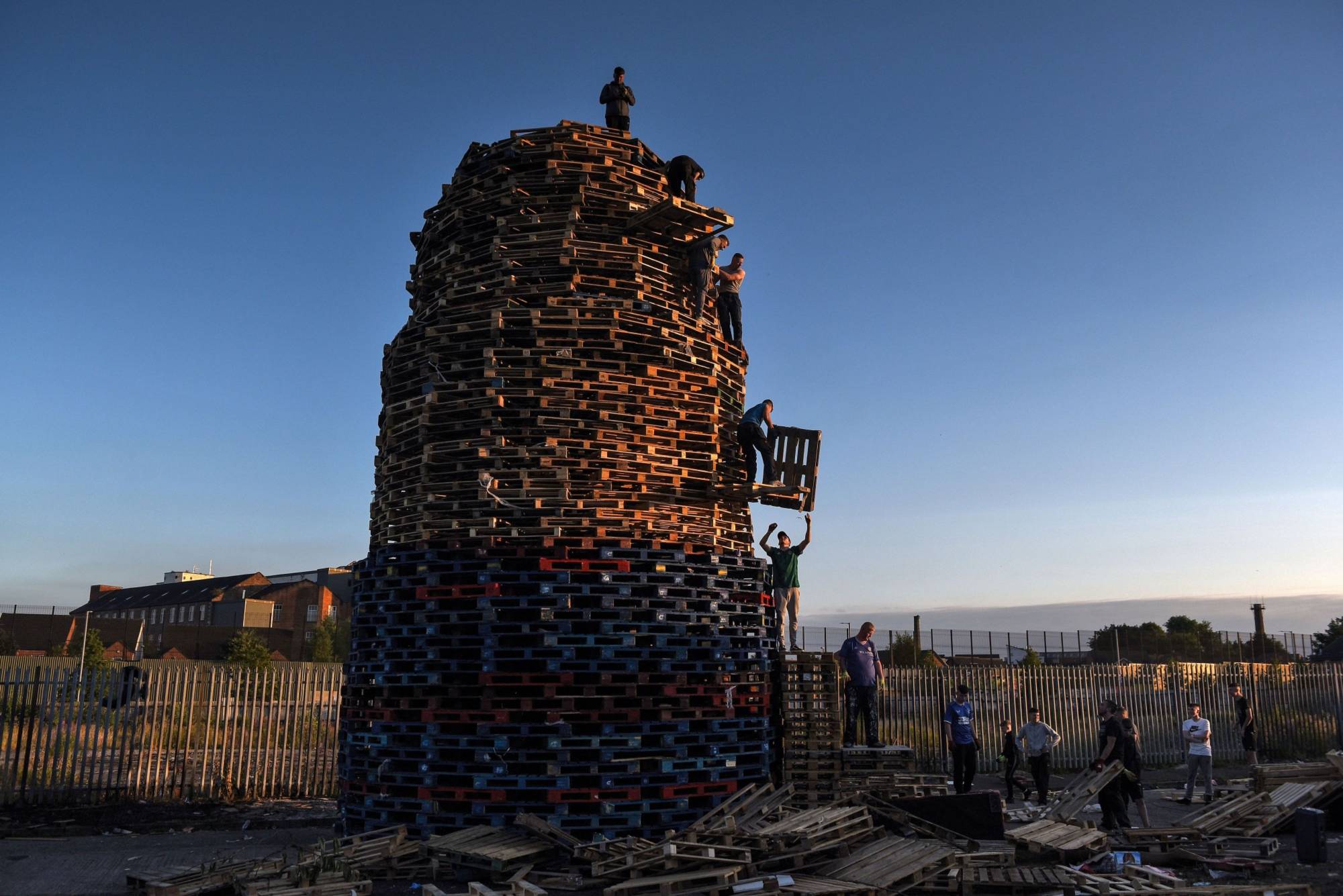It’s a rainy evening in West Belfast and three young children are taking turns to jump through a hopscotch course drawn in white chalk on the street. An expanse of slate gray concrete looms above them, along with dark green corrugated iron topped with wire mesh.
Erected in the late 1960s amid the onset of the violence that blighted Northern Ireland for three decades, the reinforced 6-meter fence separates the largely Catholic residents from the Protestants on the other side. Gates at the "peace walls” dividing the communities are typically shut from early evening until early morning.
Britain’s departure from the European Union has exposed fault lines across the U.K., and no more so than in Northern Ireland. Brexit highlighted the often violent split between pro-U.K. unionists and nationalists wanting to unite the island of Ireland. Beyond the fences, murals and images of confrontation now a century since partition, the traditional divisions are looking more blurred.



















With your current subscription plan you can comment on stories. However, before writing your first comment, please create a display name in the Profile section of your subscriber account page.